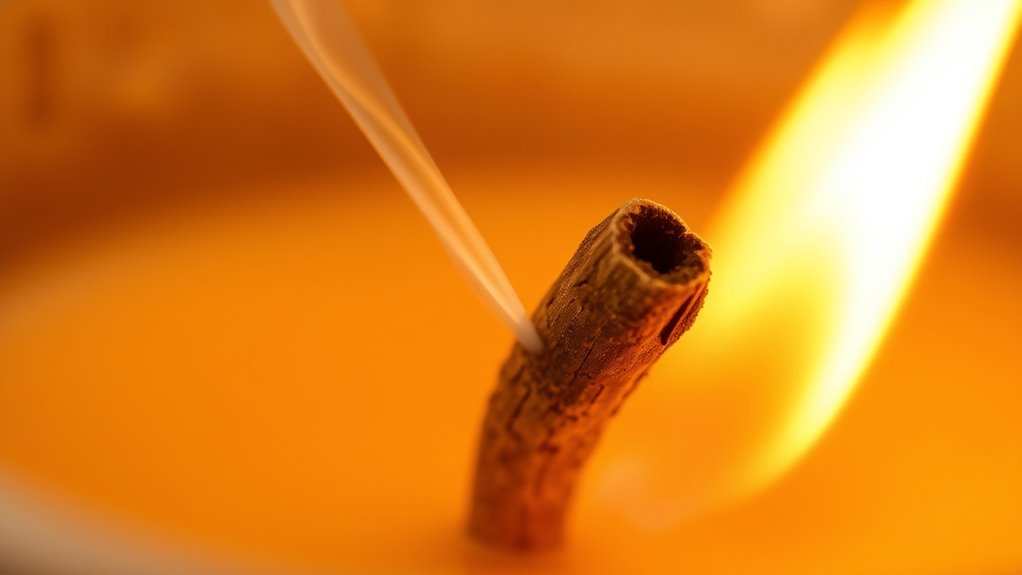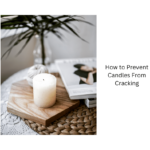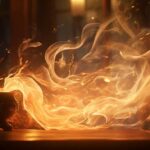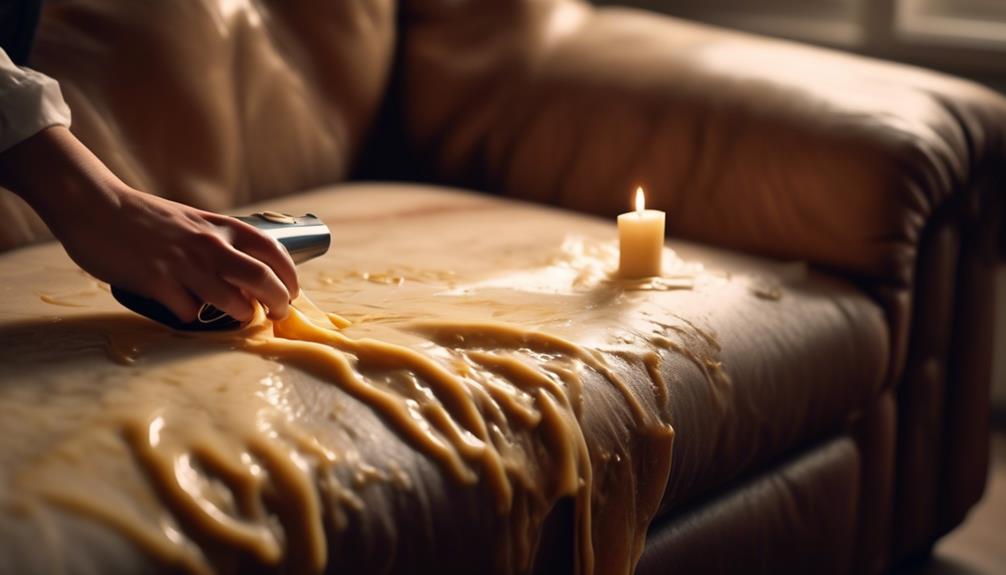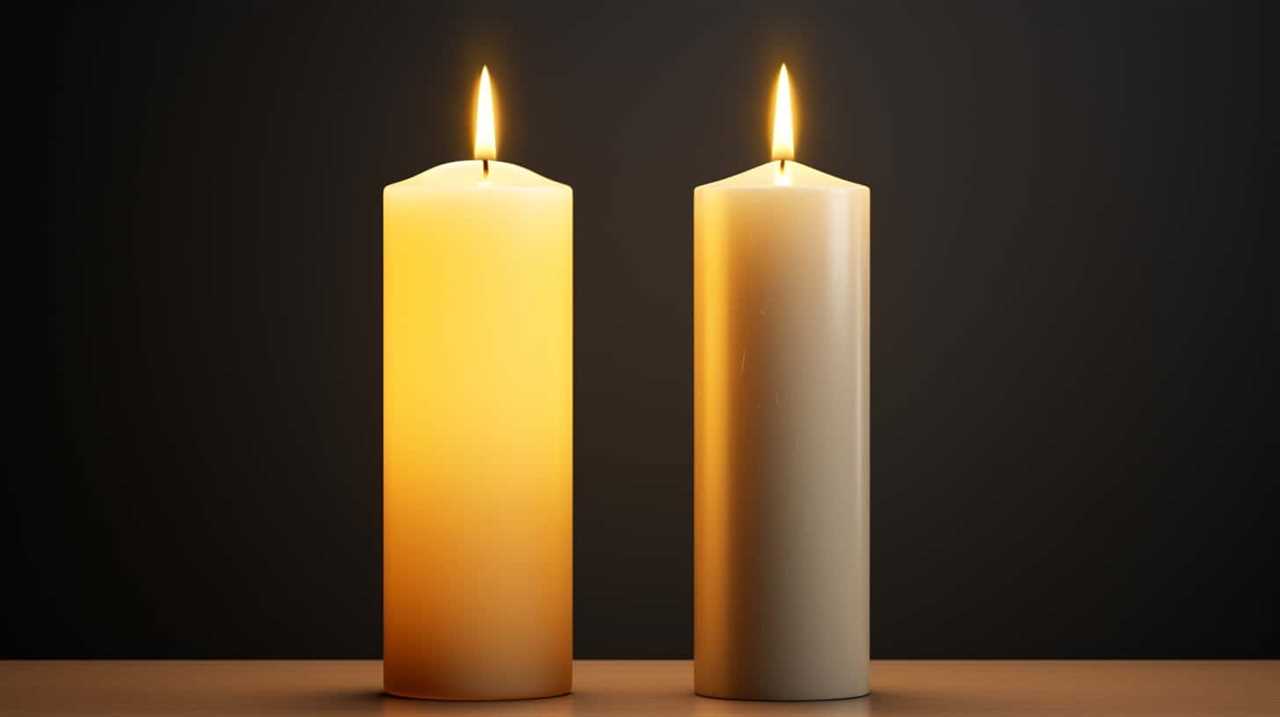When you light a wood wick, its natural fibers expand slightly as they heat up, creating internal stress. This expansion, combined with moisture trapped inside, causes tiny cracks and splits to form. As these cracks release moisture and gases, you hear soothing pops and crackles. The sound results from the physical response of the wood to heat and moisture. If you want to understand the science behind this cozy sound, there’s more to discover.
Key Takeaways
- Crackling occurs due to thermal expansion causing internal stresses that create tiny cracks in the wood wick.
- Heating turns moisture inside the wood into steam, which escapes through cracks, producing popping sounds.
- Uneven expansion from temperature fluctuations leads to cracks and the characteristic crackling noise.
- Residual moisture content in the wood wick influences the frequency and loudness of the crackles.
- The natural physical response of wood to heat and moisture results in the cozy crackling sounds.

A crackling wood wick can transform your candle experience, creating a cozy, soothing atmosphere with its gentle popping sound. That familiar crackle isn’t just random noise—it stems from the physics of how wood behaves under certain conditions. When you light a candle with a wood wick, you’re witnessing a small but fascinating display of thermal expansion and moisture content affecting the wood’s structure. As the flame heats the wood, it expands slightly due to increased temperature, and this expansion causes tiny cracks or splits to form. These cracks release trapped gases and moisture, producing the characteristic popping or crackling sounds you love.
Thermal expansion plays a key role here. Wood is a natural material that responds to temperature changes by expanding and contracting. When heated, the molecules within the wood vibrate more vigorously, making the material slightly larger. Over time, this movement creates stress within the wood fibers, especially if the thermal expansion isn’t uniform across the wick. These stresses can cause the wood to crack or split, resulting in the familiar crackling sound. This process isn’t just about sound; it also influences how well the wick burns and how consistently the candle performs.
Wood expands and contracts with heat, causing stress and cracks that produce the charming crackling sound.
Moisture content is equally important. Wood naturally contains residual moisture from its growth process or environmental exposure. When the wick is lit, the heat evaporates this moisture, which is trapped in tiny pockets inside the wood. As the internal moisture heats up, it turns into steam and escapes through the cracks. The release of this moisture in the form of steam can cause small explosions, contributing to the crackling noise. If the moisture content is high, you might notice more frequent or louder pops because more steam is being released rapidly. Conversely, a well-dried wood wick with low moisture content produces a subtle crackle.
Understanding how thermal expansion and moisture content influence the crackling of wood wicks helps you appreciate the natural phenomena behind your cozy ambiance. When you observe those pops and crackles, you’re witnessing a delicate interplay of heat, moisture, and the inherent properties of wood. This natural process not only enhances the sensory experience but also emphasizes why choosing the right wood wick matters for your candle’s performance. Properly dried wood wicks with ideal moisture levels are less prone to unwanted cracking or uneven burning, ensuring that your candle remains both beautiful and functional. So, next time you enjoy that soothing crackle, remember it’s a small, fascinating display of physics in action, making your candle moment all the more special. Understanding how thermal expansion and moisture content influence the crackling of wood wicks helps you appreciate the natural phenomena behind your cozy ambiance.
Frequently Asked Questions
Can Different Wood Types Affect the Crackling Sound?
Different wood types do affect the crackling sound you hear. You notice that denser woods, with higher wood density, tend to produce louder or more intense crackling. Grain orientation also plays a role; woods with irregular grain or varying grain directions create more unpredictable crackles. So, when choosing wood for your fireplace or wicks, consider these factors, as they influence the cozy sound and overall burning experience.
Does Candle Size Influence the Crackling Noise?
You might notice that candle size influences the crackling noise. Larger candles often produce a louder crackle because a bigger wax pool generates more heat, causing more rapid wood wick movement. Additionally, wick diameter plays a role; thicker wicks tend to crackle more as they burn hotter and release gases faster. So, both candle size and wick diameter help determine the intensity and frequency of that cozy crackling sound.
How Does Humidity Impact Wood Wick Crackling?
Think of humidity as a silent conductor in your cozy symphony. Higher humidity levels cause moisture to seep into the wood wick, increasing moisture impact and humidity effects. This added moisture can make the crackling sounds softer or more irregular, as the wood’s structure changes. Conversely, drier air keeps the wick more brittle, producing sharper crackles. So, humidity influences the texture and volume of your candle’s crackling, shaping your soothing experience.
Are There Safety Concerns With Crackling Wood Wicks?
You might wonder if crackling wood wicks pose safety risks. Generally, they don’t if you practice proper fire safety and wick maintenance. Keep the wick trimmed and never leave a burning candle unattended. The crackling is just the wood releasing trapped gases, not a fire hazard. However, always monitor your candle, make sure it’s on a heat-resistant surface, and extinguish it if you notice excessive crackling or smoke.
Can Artificial Additives Change the Crackling Sound?
You might notice that artificial additives can unexpectedly change the crackling sound of your wood wick. It’s a coincidence that some additives are used for crackling enhancement, which alters the wood’s natural behavior. These chemicals can make the crackle louder, softer, or more irregular, giving you a different cozy soundtrack. Just be aware that these enhancements may also affect the burn quality or safety, so choose products wisely for the best experience.
Conclusion
So, next time your wood wick crackles, remember it’s just nature’s way of playing a cozy symphony. The tiny bursts of air and moisture turning to steam are like a secret conversation between your fireplace and the wood. Embrace the crackle as a warm reminder that you’re part of a timeless dance, where physics and comfort meet. It’s your personal soundtrack, turning your space into a snug haven filled with the magic of science.
